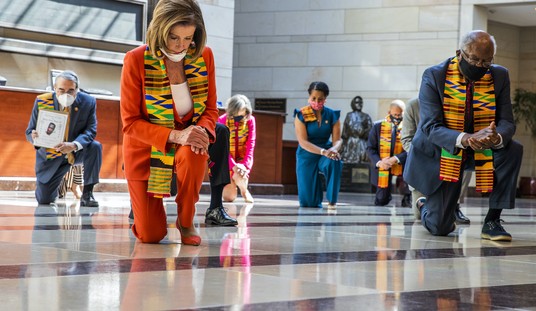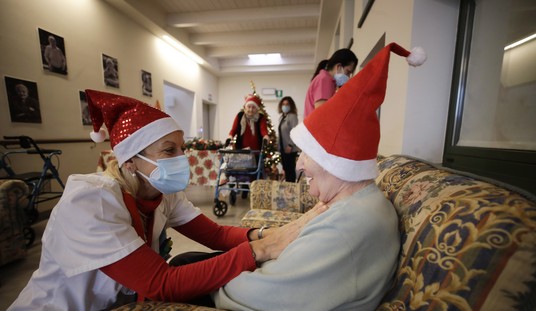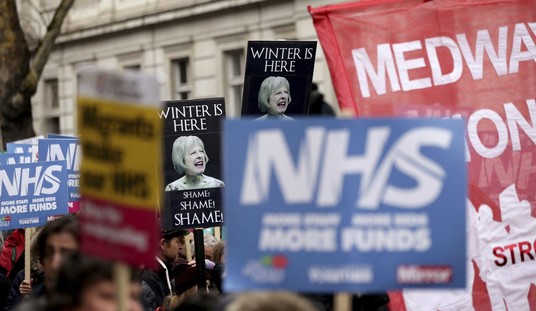Few economic indicators have been as steady and predictable in 2010 as initial jobless claims. The data range has fluctuated about 60,000 all year long between 445,000 and 504,000, which should mean that a bump upward from 449,000 to 462,000 will surprise no one:
In the week ending Oct. 9, the advance figure for seasonally adjusted initial claims was 462,000, an increase of 13,000 from the previous week’s revised figure of 449,000. The 4-week moving average was 459,000, an increase of 2,250 from the previous week’s revised average of 456,750.
The advance seasonally adjusted insured unemployment rate was 3.5 percent for the week ending Oct. 2, a decrease of 0.1 percentage point from the prior week’s revised rate of 3.6 percent.
The advance number for seasonally adjusted insured unemployment during the week ending Oct. 2 was 4,399,000, a decrease of 112,000 from the preceding week’s revised level of 4,511,000. The 4-week moving average was 4,488,500, a decrease of 34,500 from the preceding week’s revised average of 4,523,000.
The advance number of actual initial claims under state programs, unadjusted, totaled 449,568 in the week ending Oct. 9, an increase of 75,914 from the previous week. There were 508,659 initial claims in the comparable week in 2009.
That last figure seems a little eye-popping. That’s the highest weekly unadjusted claims figure since the week ending July 9th. However, that is why the Dept of Labor applies seasonal adjustments, in order to give a more stable indicator.
The new number falls right on the trendline for the year, but Reuters seems surprised to see it, and breaks out the U-word:
The number of Americans filing first-time applications for unemployment benefits unexpectedly increased last week, indicating the U.S. job market is struggling to mend.
Jobless claims rose by 13,000 to 462,000 in the week ended Oct. 9, Labor Department figures showed today in Washington. The total number of people on unemployment insurance rolls decreased to the lowest level since November 2008, while those getting extended benefits declined.
Persistent dismissals show it will take longer for employers to add enough workers to reduce unemployment that’s close to a 26-year high. The prospect of joblessness holding above 9 percent through next year is among the reasons Federal Reserve policy makers may ease monetary policy.
And that’s a surprise … how? What could possibly be “unexpected” about this? The economy hasn’t improved over the last two full quarters. No massive hiring has occurred. Why wouldn’t jobless claims stick to the same range they have all year long if the economic conditions of 2010 continue unchanged?
The AP’s Chris Rugaber, who has done better reporting this year than his competitors, doesn’t claim any surprise at all and gives the correct context for the numbers:
Despite the ups and down, claims have been stuck near 450,000 all year. Few employers see much reason to create many jobs, and some are still laying off workers. Rail operator CSX Corp., for example, said Wednesday that it can lengthen its trains to handle rising shipments, reducing its need to hire more workers.In addition, cash-strapped state and local governments are cutting jobs, adding to the ranks of those out of work.
Left unstated is the fact that the claims rate remains well above the level indicating any kind of significant job growth. Until initial jobless claims get down to around 325,000, the US economy won’t be producing enough jobs (net) to make up the ground lost in 2008-9. There is little drama between 449K and 462K, except of course for the individuals who lose their jobs. In the grand scheme, we’re talking about a slight needle variation rather than any kind of “unexpectedly” dramatic shifts. (via DogSoldier)








Join the conversation as a VIP Member